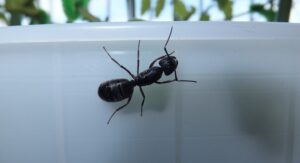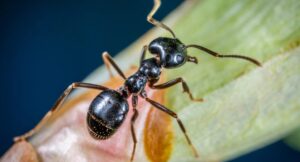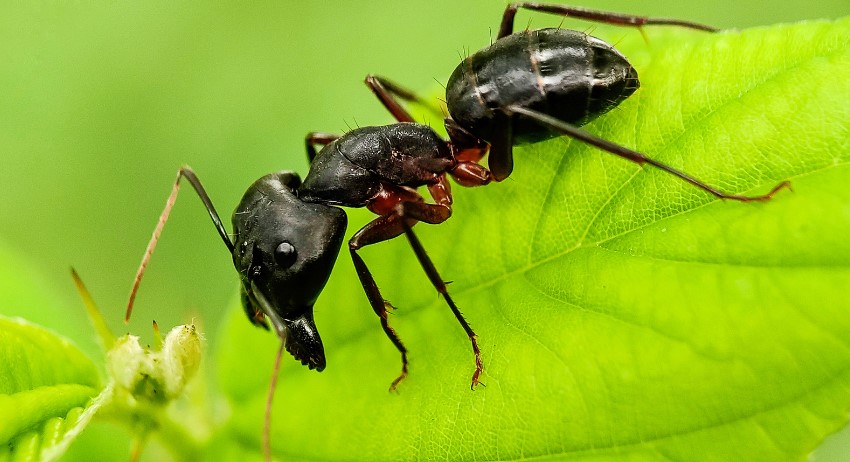Carpenter ants can be a serious nuisance, causing damage to wooden structures in your home. If you’re dealing with a carpenter ant infestation, it’s important to act quickly to prevent further damage. In this blog post, we’ll discuss how to identify carpenter ants, the signs of an infestation, and the steps you can take to get rid of these pests.
Signs of a Carpenter Ant Infestation

There are a few signs that you may have a carpenter ant infestation in your home:
- Sightings of Ants: Seeing large ants, especially near wooden structures, is a clear sign of a carpenter ant infestation.
- Wood Shavings: Carpenter ants push wood shavings out of their tunnels, which can often be found near the entrance to their nest.
- Rustling Noises: You may hear rustling or tapping noises coming from within walls or wooden structures as carpenter ants tunnel through them.
- Damaged Wood: Check for hollow-sounding wood or wood that appears to have been excavated.
How Do I Get Rid of Carpenter Ants?
- Locate the Nest: Begin by locating the carpenter’s ant nest. Look for areas with high levels of ant activity, such as around windows, doors, or in damp, dark areas like basements or crawl spaces.
- Remove Food Sources: Carpenter ants are attracted to sweet and sticky substances. Clean up spills and crumbs, and store food in airtight containers.
- Eliminate Moisture: Carpenter ants are drawn to damp wood. Fix any leaks or moisture issues in your home to make it less hospitable to ants.
- Use Bait: Place ant bait traps near areas of high ant activity. The ants will carry the bait back to the nest and effectively eliminate the colony.
- Seal Entry Points: Prevent future pest infestations by sealing cracks and crevices in your home to keep ants out.
Consult a Professional: If you’re dealing with a large or persistent infestation, it may be best to consult a professional pest control service. They can assess the situation and recommend the best course of action.
Preventing Future Infestations

To prevent future carpenter ant infestations, consider the following steps:
- Trim trees and shrubs away from your home to prevent ants from gaining easy access.
- Seal cracks and crevices in your home’s exterior to keep ants out.
- Keep firewood stacked away from your home and elevated off the ground.
By taking these proactive measures, you can help protect your home from carpenter ants and other pests. If you’re dealing with an ant infestation, it’s important to act quickly to minimize damage and prevent future problems.
Conclusion
Carpenter ants can cause significant damage if left unchecked, so it’s crucial to take proactive steps to eradicate these pests from your home. With this DIY method, you can easily get rid of carpenter ants; if the DIY methods are not working means, get help from pest control services, they have highly trained persons to deal with this is kind of pests.






